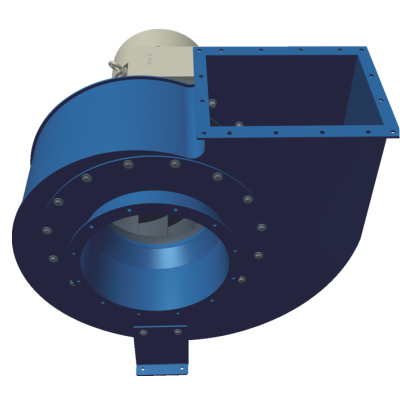Radial fan
Radial fans, colloquially known as blowers, are mostly electric motor-driven rotating devices. They are characterised by a radial direction of air flow – air ejection, hence their name – ‘radial’. This means that the air spreads out along the radius of the rotating impeller.

In radial fans, the air inflow on the inlet side is axial – i.e. in the axis of rotation of the impeller. The rotating impeller transfers energy to the air using the centrifugal effect – i.e. the mass of incoming air on the impeller blades is rejected by centrifugal force. In the initial phase, when the fan is started, the masses of air or other medium (gas, mixtures with solids, etc.) contained between the impeller blades are thrown outwards under the influence of the centrifugal force created by the rotating motion. In place of the ejected air masses, new air masses arrive from the axial direction. This starts the flow from the inlet port through the impeller, volute casing to the outlet port. The air movement is counteracted by the resistance in the fan and in the ventilation network through which the induced air flows.
How do centrifugal fans differ from axial fans?
Radial fans have higher pressure rises than axial fans. While axial fans are primarily used where high capacities with low pressure drops are required.






